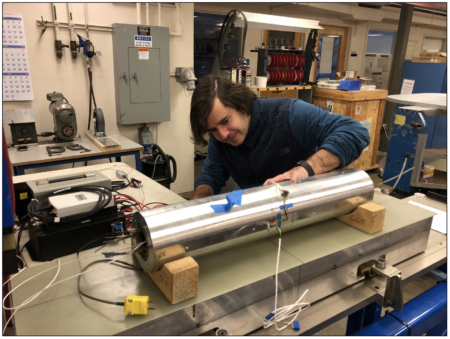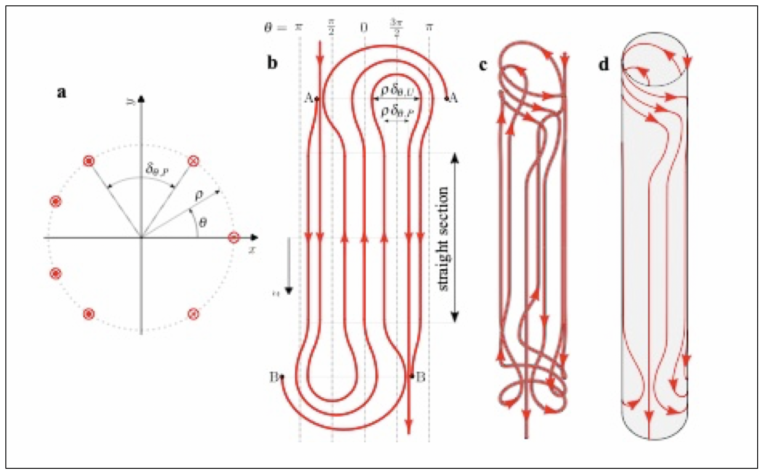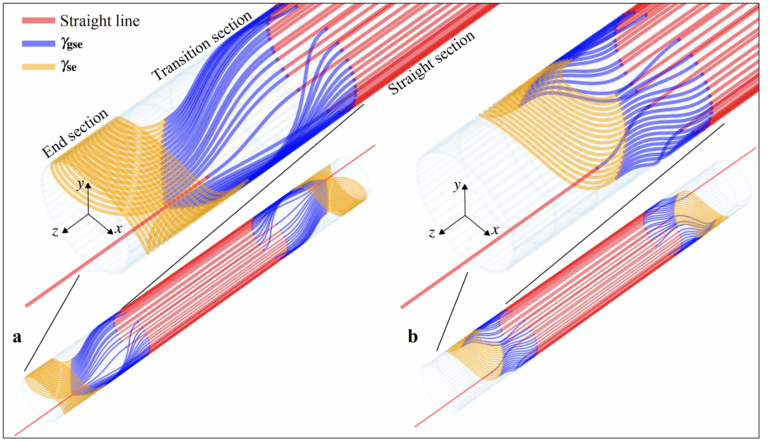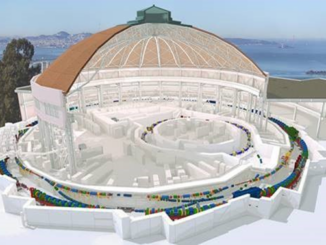
Researchers from the Superconducting Magnet Program at ATAP have shown how an innovative magnet design could extend the limits of current superconducting magnets, promising better-performing and more powerful devices that are cheaper to build. The work could pave the way for new superconducting magnets for next-generation high-energy colliders and other applications, including fusion energy and proton therapy.
Superconducting magnets “play a critical role in accelerators as they shape and steer the particle beams and determine the accelerator’s energy reach,” says José Luis Rudeiros Fernández, a Research Scientist at ATAP’s Superconducting Magnet Program, who is working with Senior Scientist and deputy program lead Paolo Ferracin to develop a new type of superconducting magnet that is not only capable of producing very high-field strengths but can also be fabricated using cost-effective manufacturing processes.
“Although today’s superconducting magnets can generate magnetic fields upwards of 9 T, there is a considerable ongoing effort to develop new magnets that can produce fields as high as 16 T or even higher. These more powerful magnets could be used for upgrading current accelerators and for next-generation colliders.”

Rudeiros Fernández says that much of this effort is focused on designs known as cosine-theta (CT) and canted cosine-theta (CCT) magnets, as well as materials like rare-earth barium copper oxide (ReBCO) for making the superconducting coils used in them. “CT and CCT magnets can generate the uniform, high-strength magnetic fields required in accelerators and can also be fabricated using simpler manufacturing processes, making them much less expensive to produce than current magnets.”
While ReBCO, he adds, shows great promise for making superconducting coils because of its ability to sustain strong magnetic fields at higher temperatures—making it a so-called high-temperature superconductor—than other superconducting materials, he says it has “some intrinsic properties that make it difficult to use in traditional magnet designs.”
“For instance, current circular accelerator designs use an evacuated bore tube in which beams of charged particles are bent by coils wrapped around it. However, because this tube has a small aperture of only 50 mm in radius, superconducting coils made from ReBCO degrade when wound around these relatively small apertures.”
He says this precludes them from being used in CT magnets, which leads to less efficient CCT designs that can significantly increase the overall cost of the magnet.
Motivated by these limitations, Rudeiros Fernández and Ferracin turned to a novel magnet design known as a uni-layer magnet. Uni-layer magnets are designed with a continuous unit length that can form magnetic fields perpendicular to the bore aperture.

“While conventional magnet designs utilize symmetric spiral geometries for the superconducting coils to produce uniform magnetic fields,” explains Rudeiros Fernández, “our models showed that uni-layer magnets with asymmetrical coil configurations could also maintain highly uniform magnetic fields.”
“Moreover,” he continues, “this asymmetry increases the minimum radius required for winding ReBCO around the bore tube.”
He says this approach represents a “paradigm shift” in the design of magnets and could enable more efficient and reliable HTS superconducting magnets that are much less expensive to build than those currently being considered for future particle accelerators.
“While the research is still in its initial stages, we plan to build prototype magnets that will allow us to validate our observations and could lead to an optimized magnet design for testing in real-world applications.”
The unilayer design, adds Ferracin, is “an innovative solution that has never been considered before by the magnet community and has the potential to significantly improve the performance of the next generation of superconducting magnets made with HTS materials.”
To learn more …
José Luis Rudeiros Fernández and Paolo Ferracin, “Uni-layer magnets: a new concept for LTS and HTS based superconducting magnets,” Supercond. Sci. Technol. 36 (2023), https://doi.org/10.1088/1361-6668/acc281
Written by Carl A. Williams or other authors as credited.
For more information on ATAP News articles, contact Carl A. Williams (caw@lbl.gov)



